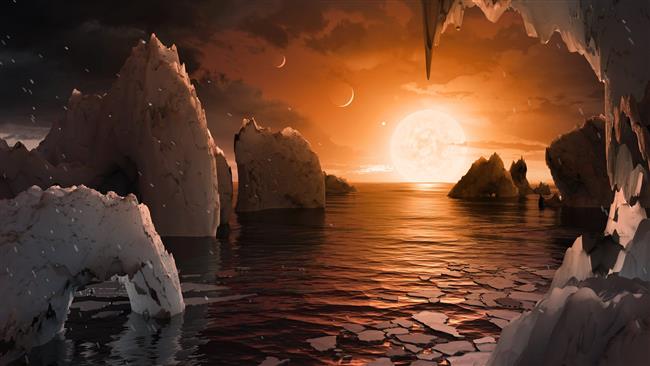Scientists discover whole solar system potentially harboring life
NASA has announced that its Spitzer Space Telescope has found seven Earth-like planets in the orbit of a small star located some 40 light-years away. “The discovery gives us a hint that finding the next Earth is not a question of if, but of when,” said NASA Science Directorate head Thomas Zurbuchen during a Wednesday press conference.
All of the planets share similarities with Earth, three of which are in the habitable zone — the orbital region surrounding a star in which planets have conditions capable of sustaining liquid water. The recently discovered planets all orbit a red dwarf star called TRAPPIST-1 much smaller and cooler than the Sun. “This is the most exciting result I have seen in the 14 years of Spitzer operations,” said Sean Carey, manager of NASA’s Spitzer Science Center.
In comparison to the distance between our Sun and its planets, the planets around TRAPPIST-1 are located very close together. “If a person was standing on one of the planet’s surface, they could gaze up and potentially see geological features or clouds of neighboring worlds, which would sometimes appear larger than the Moon in Earth’s sky,” said NASA.
The discovery was also announced in the journal Nature in a report whose lead author, Michaël Gillon, is an astrophysicist at the University of Liège in Belgium.
Presstv





